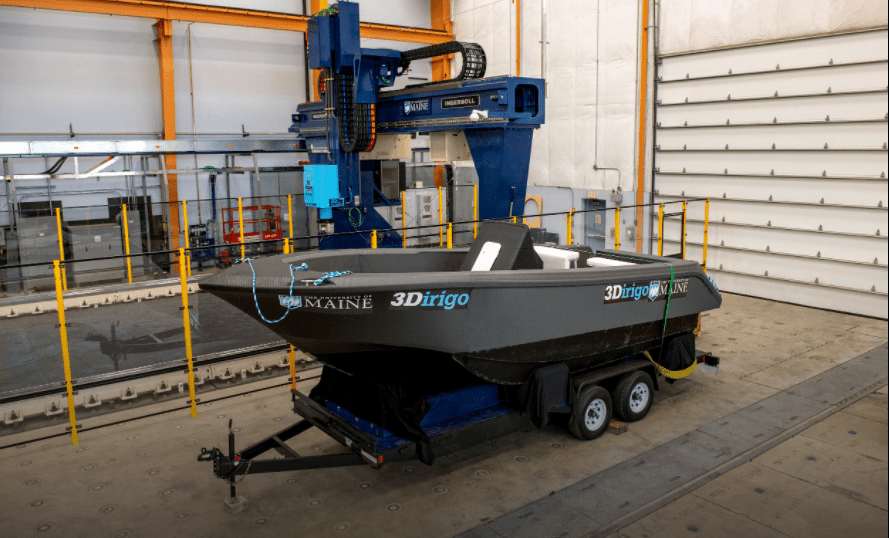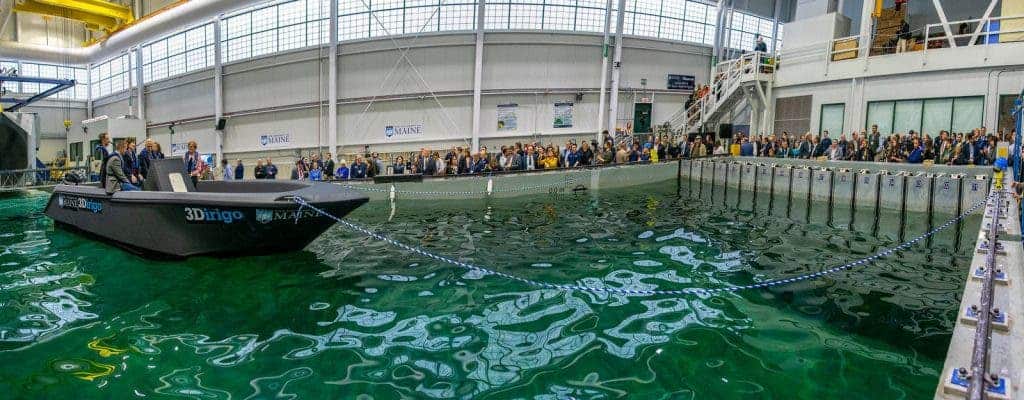Using a massive 3D printer, the University of Maine built the world’s largest 3D-printed boat. Here it is — it took more than three and a half days, but you can see it in half a minute.
The team set three world records in the process: world’s largest 3D printer, largest solid 3D-printed object, and largest 3D-printed boat. But the researchers didn’t build the boat for quirks and records — they built it to see if wood and plastic could work together for 3D printing.
If wood can be integrated into large-scale 3D printing, it could serve as a possible replacement for metal, becoming a more sustainable alternative. Normally, when building large things, you want metal because it’s so strong and rigid. But biobased materials like wood could offer similar parameters at a fraction of a cost.

“Maine is the most forested state in the nation, and now we have a 3D printer big enough to make use of this bountiful resource,” said Maine Senator Angus King, who attended the boat’s unveiling.
The 25-foot patrol boat is now tested with a wind machine and wave basin at an offshore facility, and if the approach is confirmed, it could mark a turning point for 3D-printed materials.

The key element that allows traditional 3D-printing polymers to “play nice” with wood is something called cellulose nanofibers, or CNF. CNF consists of tiny fibers that can be integrated with thermoplastic to make the resulting material much stronger. Cellulose nanofiber is lightweight, durable, and has thermal expansion parameters on par with glass. It’s also sustainable and has a low environmental impact. It’s not surprising that teams are looking to incorporate it.
“The UMaine Composites Center received $500,000 from the Maine Technology Institute (MTI) to form a technology cluster to help Maine boatbuilders explore how large-scale 3D printing using economical, wood-filled plastics can provide the industry with a competitive advantage,” says a UMaine news release. “The cluster brings together the expertise of UMaine researchers and marine industry leaders to further develop and commercialize 3D printing to benefit boatbuilders in the state. By 3D printing plastics with 50% wood, boat molds and parts can be produced much faster and are more economical than today’s traditional methods.”
This is also a stepping stone for other, even more ambitious projects. 3D printing is entering a golden stage, and finding ways to incorporate sustainable materials with the desired properties into larger designs is already a major field of research. The University of Maine recently secured $2.8 million in funding from the U.S. Department of Energy to develop a more eco-friendly method of 3D printing wind turbine blade molds, using the same printing system.


